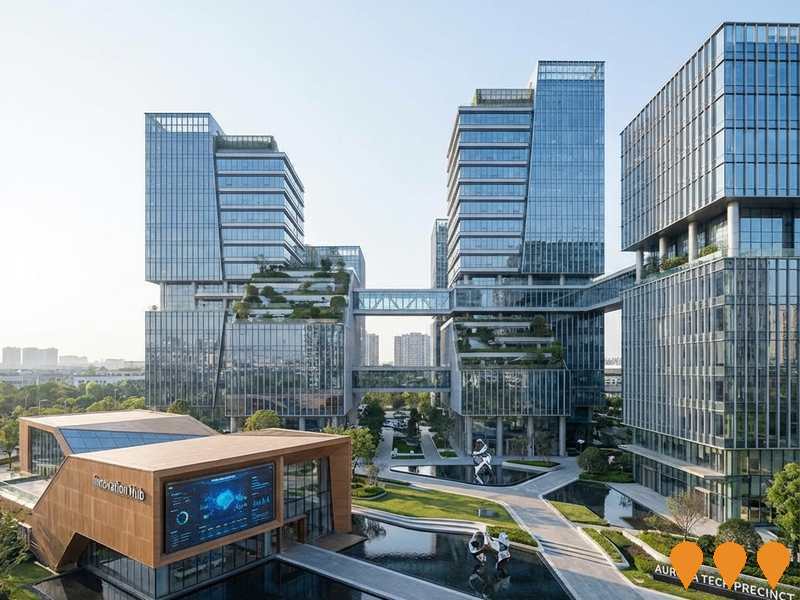Chart Color Schemes
est. as @ -- *
ABS ERP | -- people | --
2021 Census | -- people
Sales Activity
Curious about local property values? Filter the chart to assess the volume and appreciation (including resales) trends and regional comparisons, or scroll to the map below view this information at an individual property level.
Find a Recent Sale
Sales Detail
Population
Newtown has seen population growth performance typically on par with national averages when looking at short and medium term trends
Newtown Vic's population is approximately 10,440 as of August 2025. This figure shows a decrease of 5 people since the 2021 Census, which recorded a population of 10,445. The change is inferred from ABS estimated resident population of 10,418 in June 2024 and an additional 37 validated new addresses post-Census. This results in a density ratio of 1,796 persons per square kilometer, higher than the average across national locations assessed by AreaSearch. Overseas migration contributed approximately 78.2% to recent population gains.
AreaSearch uses ABS/Geoscience Australia projections for each SA2 area, released in 2024 with a base year of 2022. For uncovered areas, they utilise VIC State Government's Regional/LGA projections from 2023, adjusted using weighted aggregation to SA2 levels. Growth rates by age group are applied across all areas for years 2032 to 2041. Future population dynamics project an above-median growth for Australia's non-metropolitan areas. By 2041, the area is expected to increase by 2,106 persons, a total increase of 19.9% over 17 years.
Frequently Asked Questions - Population
Development
AreaSearch analysis of residential development drivers sees Newtown recording a relatively average level of approval activity when compared to local markets analysed countrywide
Newtown approved approximately 51 residential properties annually over the past five financial years ending June 2021, totalling 257 homes. As of July 2026, two approvals have been recorded. The population has decreased during this period, yet housing supply has remained adequate relative to demand, resulting in a balanced market with good buyer choice. New dwellings are developed at an average cost of $553,000, higher than regional norms due to quality-focused development.
In the current financial year ending June 2026, $14.8 million in commercial development approvals have been recorded, indicating moderate levels of commercial development. Compared to the Rest of Vic., Newtown has markedly lower building activity, with 54.0% less per person on average. This constrained new construction typically reinforces demand and pricing for existing homes, although recent construction activity has increased. New developments consist of 44.0% standalone homes and 56.0% townhouses or apartments, marking a significant shift from the current housing pattern of 77.0% houses. This trend towards denser development provides accessible entry options appealing to downsizers, investors, and entry-level buyers. With around 182 people per dwelling approval, Newtown is considered a low-density area.
Population forecasts indicate Newtown will gain approximately 2,082 residents by 2041. Building activity is keeping pace with growth projections, but as the population grows, buyers may face increased competition for housing.
Frequently Asked Questions - Development
Infrastructure
Newtown has moderate levels of nearby infrastructure activity, ranking in the top 50% nationally
Changes to local infrastructure significantly influence an area's performance. AreaSearch identified 29 projects likely impacting the area. Notable projects include The Mill Newtown, Marshall Street Social Housing Renewal, Arc Latrobe Townhomes, and Latrobe Boulevard Riverside Development. Below is a list detailing those likely most relevant.
Professional plan users can use the search below to filter and access additional projects.
INFRASTRUCTURE SEARCH
 Denotes AI-based impression for illustrative purposes only, not to be taken as definitive under any circumstances. Please follow links and conduct other investigations from the project's source for actual imagery. Developers and project owners wishing us to use original imagery please Contact Us and we will do so.
Denotes AI-based impression for illustrative purposes only, not to be taken as definitive under any circumstances. Please follow links and conduct other investigations from the project's source for actual imagery. Developers and project owners wishing us to use original imagery please Contact Us and we will do so.
Frequently Asked Questions - Infrastructure
The Mill Newtown
A significant riverfront mixed-use development transforming the historic former woollen mill site. The **Hamilton Group** acquired the site (formerly approved for 343 dwellings) and is developing a **revised vision**. The initial focus is on the existing mill building for **commercial, retail, and hospitality uses** (similar to their Federal Mills precinct), with a later staged construction of **fewer apartments** (estimated 100-150 dwellings) in four or five seven-storey blocks facing the Barwon River. The original permit for 314 apartments, 29 townhouses, commercial, retail, and childcare facilities has been superseded by the new plans which require a fresh planning permit.
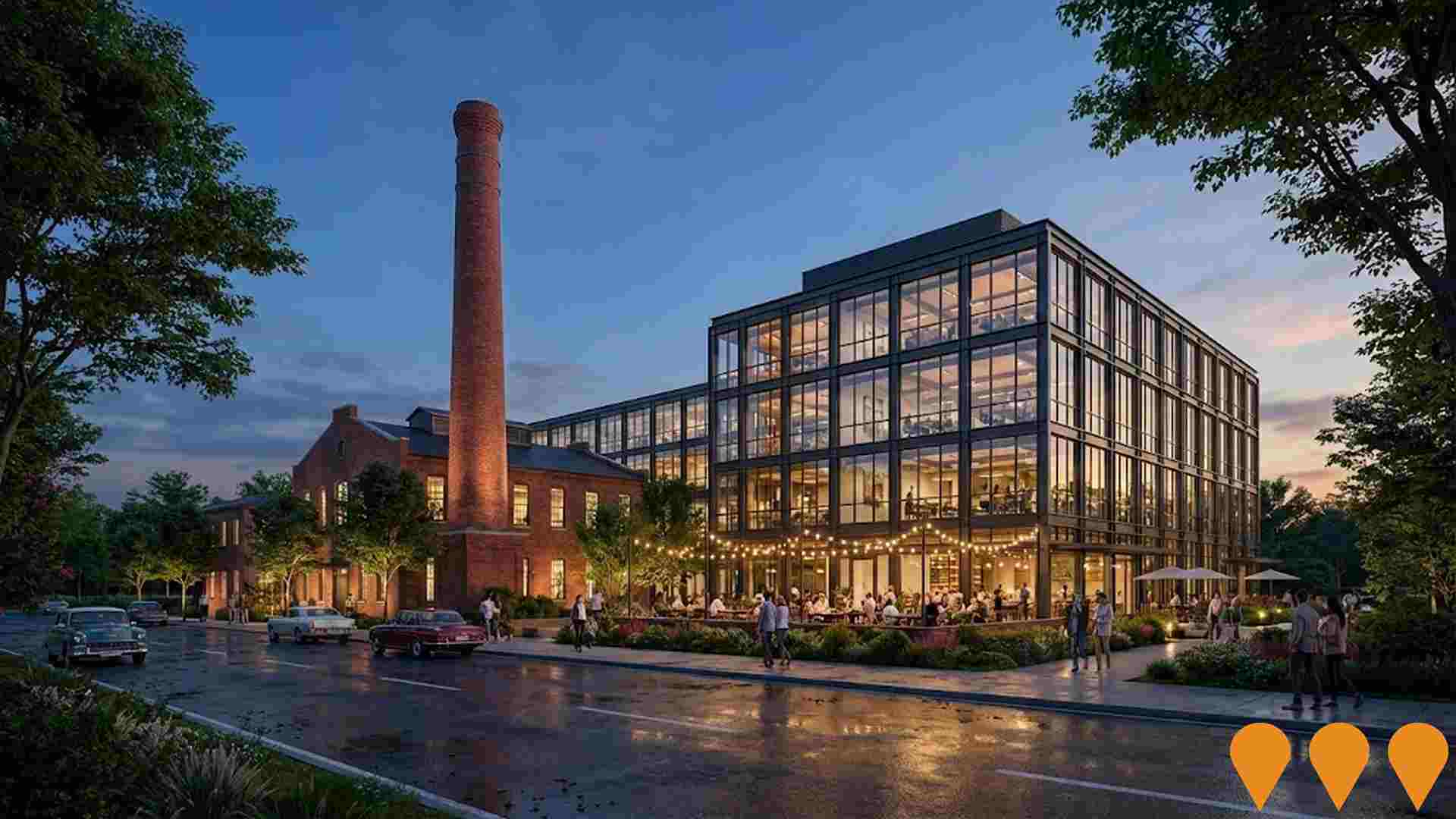
Geelong Line Upgrade (Geelong Fast Rail)
Major upgrade of the Melbourne - Geelong - Warrnambool rail corridor to enable faster, more frequent and reliable services. Key works include track duplication, signalling upgrades, level crossing removals and station improvements to achieve 50-60 minute journeys from Geelong to Melbourne by the early 2030s, with further stages targeting sub-one-hour travel times.
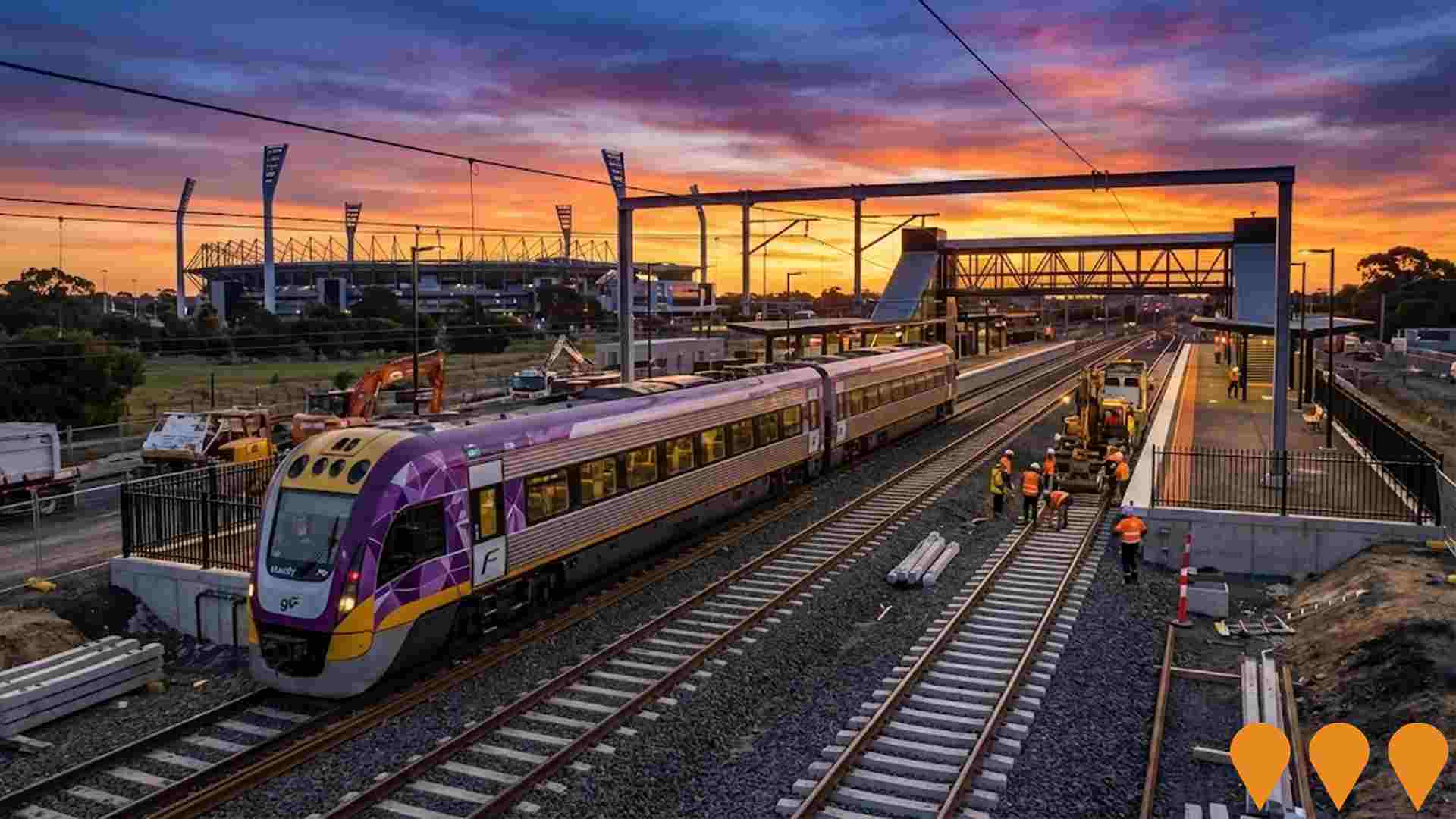
Barwon Women's and Children's Hospital
The Barwon Women's and Children's Hospital is a $708 million dedicated women's and children's facility being built within the University Hospital Geelong precinct. Delivered by the Victorian Health Building Authority in partnership with Barwon Health, the new hospital will include expanded maternity services, neonatal intensive care, paediatric inpatient units, birthing suites, special care nursery, women's health clinics and additional operating theatres. Construction by Built Pty Ltd began in February 2025 and is progressing on schedule for completion in late 2029.
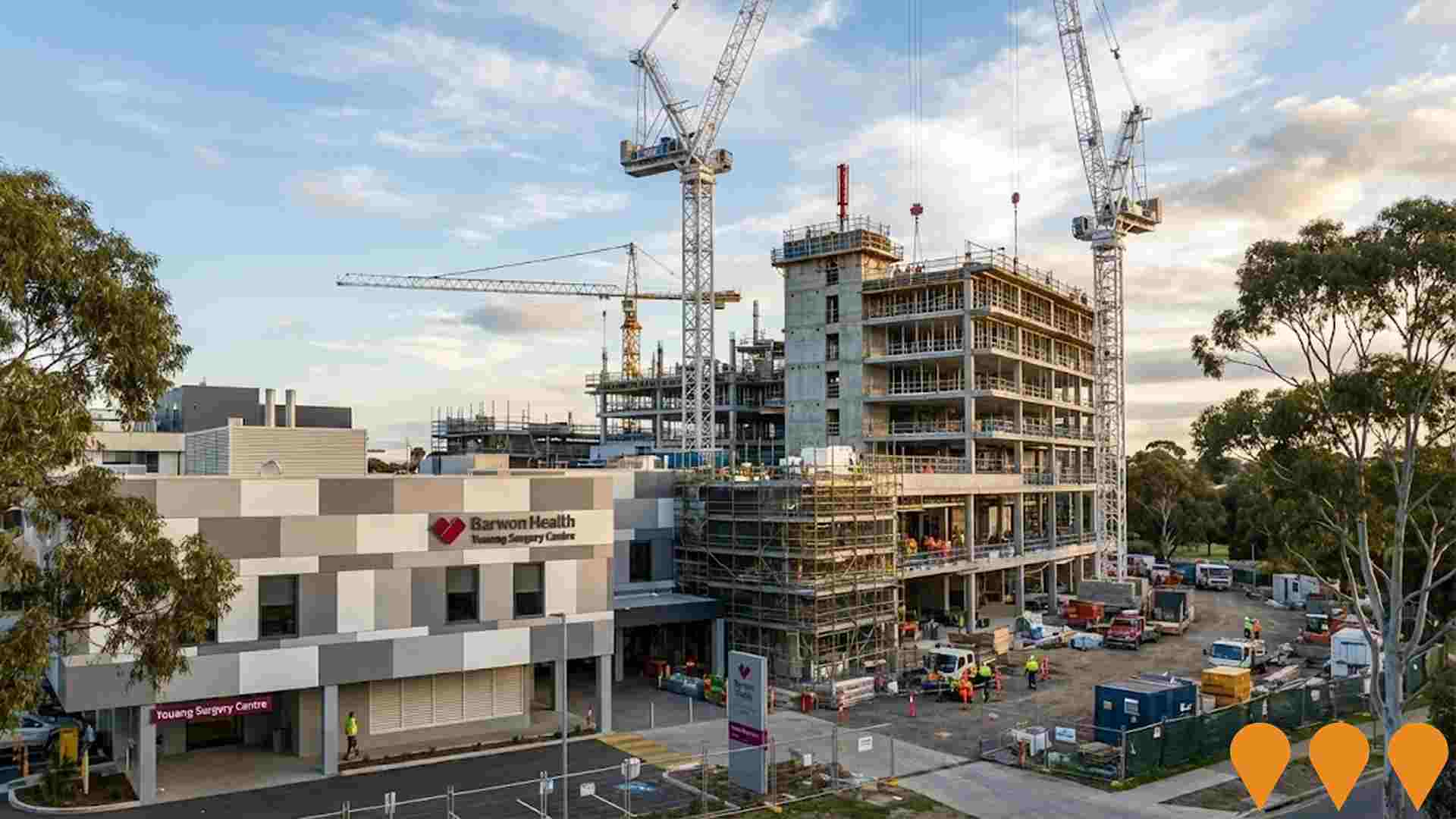
The Mill Newtown
Historic Retired Soldiers Woollen Mill redevelopment featuring 343 apartments and townhouses across 10 new buildings, with commercial and retail spaces, childcare centre, and heritage retention. Designed by JAM Architects on 2.9-hectare riverfront site with direct Barwon River frontage.

Nyaal Banyul Geelong Convention and Event Centre
The project involves constructing a purpose-built convention and exhibition space, including a 1000-seat venue, two large exhibition spaces, meeting rooms, conference facilities, flexible event spaces, retail spaces for food and beverage, a large public plaza, and a 200-room Crowne Plaza hotel.
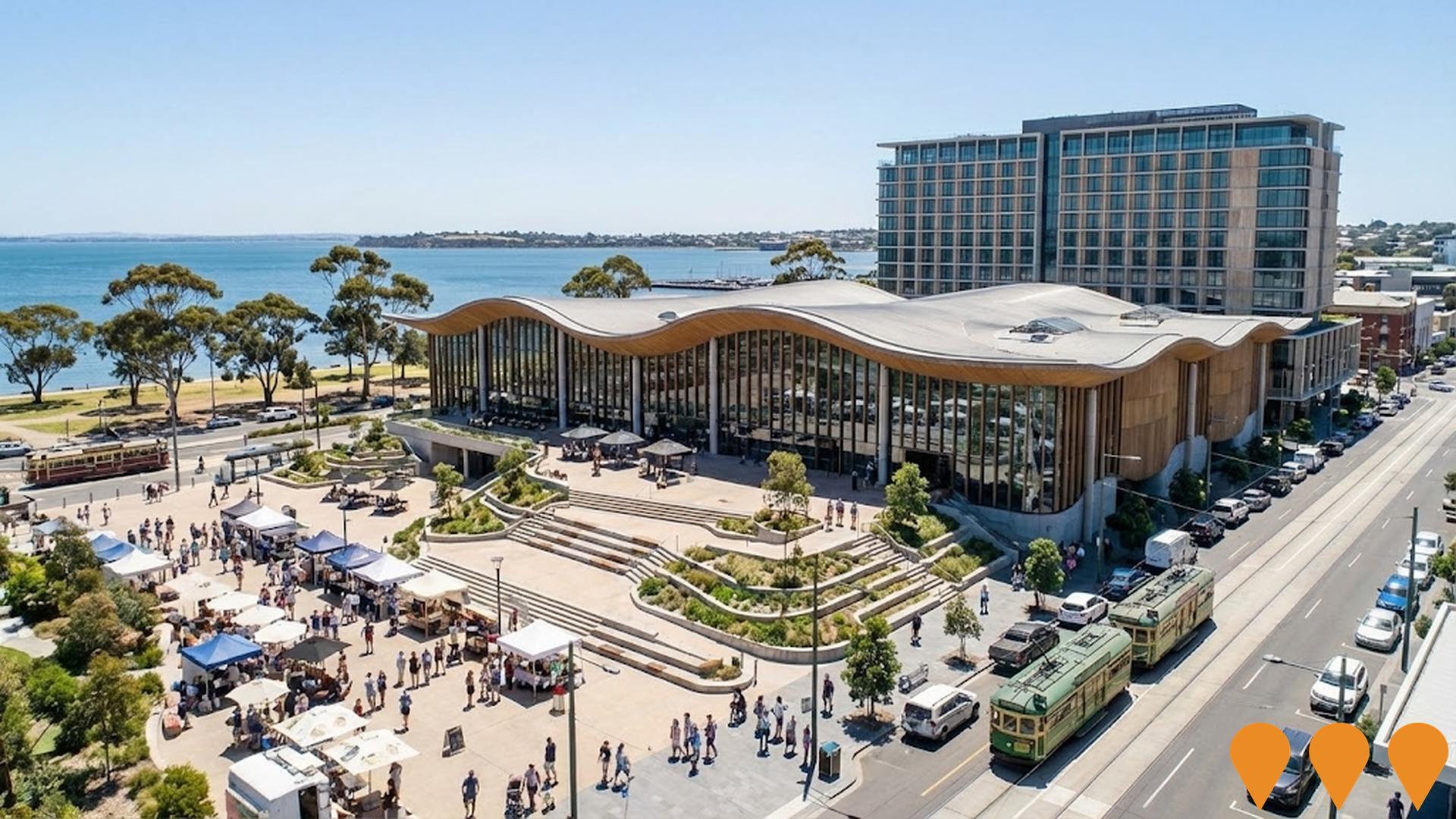
Arc Latrobe Townhomes
Five bespoke townhomes featuring two and three bedroom combinations crafted by Genton Architecture. Contemporary and timeless design with flexible kitchen spaces, private balconies, and premium finishes opposite Kardinia Park.

Geelong Regional Sports Precinct
Development of a world-class regional sports precinct centered around Kardinia Park, including stadium upgrades, new training facilities, community sports infrastructure, and integrated commercial and entertainment venues.
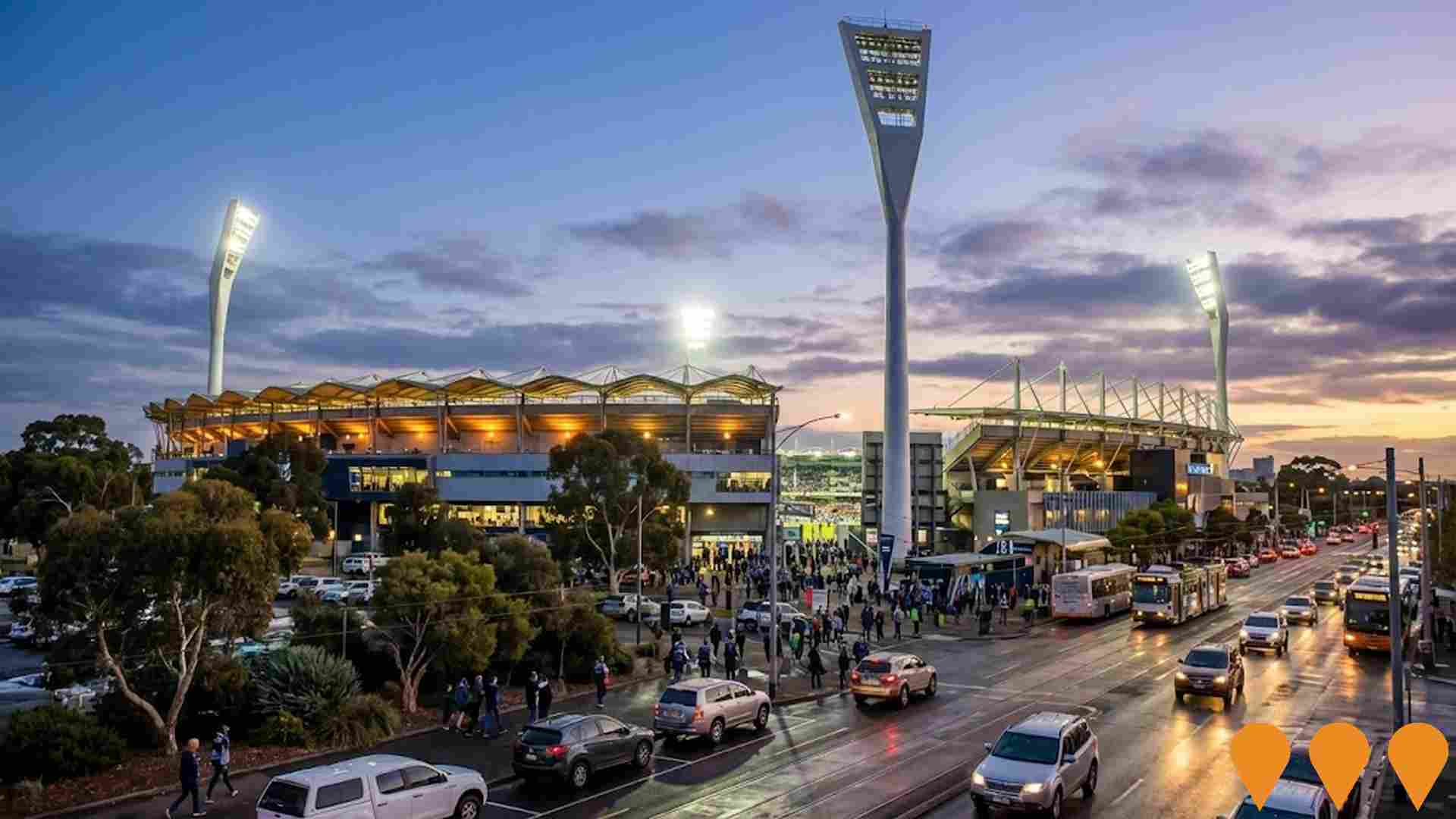
Geelong Smart City Initiative
Implementation of smart city technologies across Geelong including IoT sensors, smart traffic management, digital infrastructure, e-governance platforms, and integrated urban planning systems.
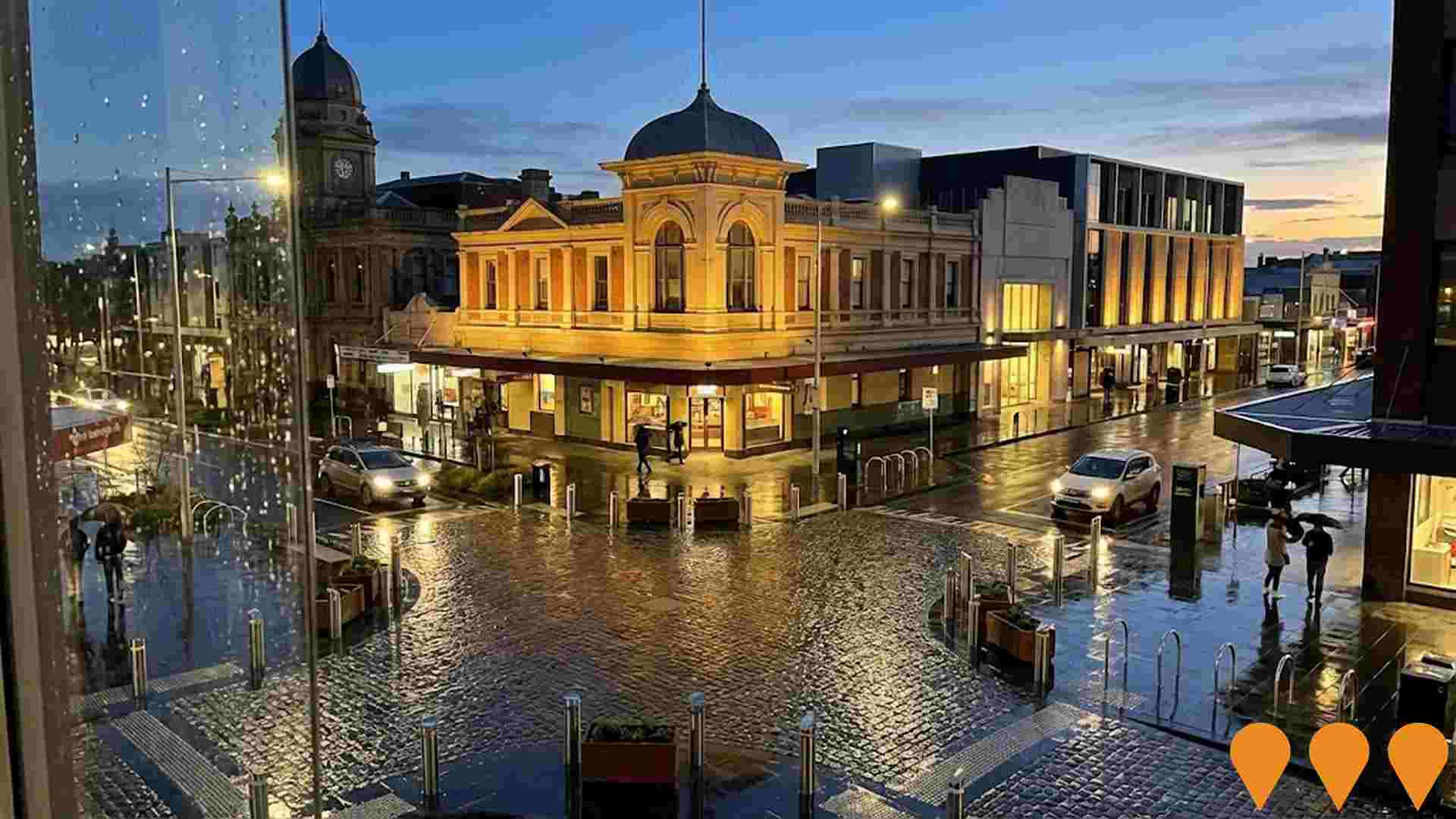
Employment
The labour market strength in Newtown positions it well ahead of most Australian regions
Newtown Vic has high education levels among its workforce. Key sectors include health care & social assistance, education & training, retail trade.
It specializes in professional & technical jobs with a 200% share compared to the region. Agriculture, forestry & fishing is under-represented at 0.9%. Unemployment rate was 1.8% as of June 2025, below Rest of Vic.'s 3.8%. Workforce participation was 66.0%, higher than Rest of Vic.'s 57.4%.
Employment grew by 2.4% in the year to June 2025, while unemployment remained stable. Many residents commute elsewhere for work. Jobs and Skills Australia forecasts national employment growth of 6.6% over five years and 13.7% over ten years. Applying these projections to Newtown's mix suggests local growth of approximately 7.2%% over five years and 14.6% over ten years.
Frequently Asked Questions - Employment
Income
Income metrics indicate excellent economic conditions, with the area achieving higher performance than 75% of national locations assessed by AreaSearch
Newtown's median income among taxpayers was $57,846 and average income stood at $93,586 in financial year 2022. These figures were higher than those for the Rest of Vic., which were $48,741 and $60,693 respectively. Based on Wage Price Index growth of 12.16% since financial year 2022, current estimates project median income to be approximately $64,880 and average income to be around $104,966 as of September 2025. According to the 2021 Census, household, family and personal incomes in Newtown ranked highly nationally, between the 72nd and 79th percentiles. Income distribution showed that 26.9% of individuals earned between $1,500 and $2,999 weekly, aligning with the broader area where this cohort also represented 30.3%. Notably, 35.3% earned above $3,000 weekly. After housing costs, residents retained 87.2% of their income, indicating strong purchasing power. The area's SEIFA income ranking placed it in the 8th decile.
Frequently Asked Questions - Income
Housing
Newtown is characterized by a predominantly suburban housing profile, with above-average rates of outright home ownership
In Newtown, as per the latest Census evaluation, 77.0% of dwellings were houses, with the remaining 23.0% comprising semi-detached homes, apartments, and other dwelling types. This compares to Non-Metro Vic., where 84.6% were houses and 15.4% were other dwellings. Home ownership in Newtown stood at 38.2%, with mortgaged dwellings at 32.2% and rented ones at 29.6%. The median monthly mortgage repayment was $2,167, higher than Non-Metro Vic.'s average of $1,712. Weekly rent in Newtown averaged $360, compared to Non-Metro Vic.'s $335. Nationally, Newtown's mortgage repayments were significantly higher at $2,167 versus the Australian average of $1,863, while rents were lower at $360 compared to the national figure of $375.
Frequently Asked Questions - Housing
Household Composition
Newtown has a typical household mix, with a higher-than-average median household size
Family households account for 68.0% of all households, including 32.3% couples with children, 26.4% couples without children, and 8.7% single parent families. Non-family households constitute the remaining 32.0%, with lone person households at 28.4% and group households comprising 3.6% of the total. The median household size is 2.5 people, larger than the Rest of Vic. average of 2.4.
Frequently Asked Questions - Households
Local Schools & Education
Newtown demonstrates exceptional educational outcomes, ranking among the top 5% of areas nationally based on AreaSearch's comprehensive analysis of qualification and performance metrics
Educational attainment in Newtown is notably high with 44% of residents aged 15 and above holding university qualifications, compared to 21.7% in the rest of Victoria and 27.3% in the SA3 area. Bachelor degrees are the most common at 28.6%, followed by postgraduate qualifications (10.3%) and graduate diplomas (5.1%). Vocational credentials are also prevalent, with 26.8% of residents aged 15 and above holding such qualifications, including advanced diplomas (11.6%) and certificates (15.2%). Educational participation is high, with 31.3% of residents currently enrolled in formal education, comprising 10.4% in primary, 9.5% in secondary, and 6.1% pursuing tertiary education. There are 11 schools serving 5,996 students in the area, which shows significant socio-educational advantages and academic achievement (ICSEA: 1112).
The educational mix includes 5 primary, 2 secondary, and 4 K-12 schools. Newtown functions as an education hub with 57.4 school places per 100 residents, significantly above the regional average of 16.7, attracting students from surrounding communities. Note: where schools show 'n/a' for enrolments, please refer to the parent campus.
Frequently Asked Questions - Education
Schools Detail
Nearby Services & Amenities
Transport
Transport servicing is moderate compared to other areas nationally based on assessment of service frequency, route connectivity and accessibility
The analysis of public transport in Newtown indicates that there are currently 51 active transport stops operating within the area. These stops serve a mix of bus routes, with a total of 4 individual routes providing service to these locations. The combined weekly passenger trips facilitated by these routes amount to 1,134.
Transport accessibility is deemed good, with residents typically situated an average of 215 meters from their nearest transport stop. The service frequency averages 162 trips per day across all routes, which equates to approximately 22 weekly trips per individual stop.
Frequently Asked Questions - Transport
Transport Stops Detail
Health
The level of general health in Newtown is notably higher than the national average with both young and old age cohorts seeing low prevalence of common health conditions
Newtown demonstrates above-average health outcomes with both young and old age cohorts seeing low prevalence of common health conditions. The rate of private health cover is exceptionally high at approximately 68% of the total population (7,120 people), compared to 52.7% across Rest of Vic., and 55.3% nationally. The most common medical conditions in the area are asthma and mental health issues, impacting 7.9% and 7.9% of residents respectively, while 71.3% declare themselves completely clear of medical ailments compared to 65.9% across Rest of Vic.
The area has 18.6% of residents aged 65 and over (1,944 people), which is higher than the 16.8% in Rest of Vic. Health outcomes among seniors are particularly strong, performing even better than the general population in health metrics.
Frequently Asked Questions - Health
Cultural Diversity
Newtown ranks below the Australian average when compared to other local markets across a number of language and cultural background related metrics
Newtown's cultural diversity was found to be below average, with 85.0% of its population born in Australia, 90.8% being citizens, and 90.9% speaking English only at home. The dominant religion in Newtown is Christianity, comprising 52.2% of the population, compared to 47.4% across Rest of Vic.. The top three ancestry groups in Newtown are English (28.6%), Australian (23.8%), and Irish (12.9%).
Notably, Scottish ancestry is overrepresented at 10.3%, compared to 8.3% regionally, while Croatian is underrepresented at 1.2% (vs 1.5%) and Dutch is slightly lower than regional levels at 1.9%.
Frequently Asked Questions - Diversity
Age
Newtown's population is slightly older than the national pattern
The median age in Newtown is 40 years, which is slightly below Rest of Vic.'s average of 43 but above Australia's median of 38. The percentage of individuals aged 15-24 in Newtown is notably higher at 13.2%, compared to the Rest of Vic.'s average. Meanwhile, those aged 75-84 are under-represented at 5.8%. Between the 2021 Census and present, the population aged 25-34 has increased from 11.0% to 12.3%, while the 45-54 age group has decreased from 14.0% to 12.7% and the 55-64 cohort has dropped from 12.9% to 11.8%. By 2041, Newtown's population aged 25-34 is projected to grow significantly by 744 people (58%), reaching a total of 2,034 individuals. Conversely, the 55-64 age cohort is expected to decline by 24 people.


